Vibrant Vienna
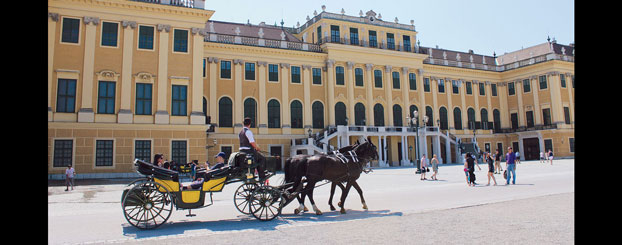
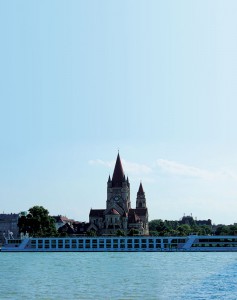
I had been warned that summers, particularly Augusts in Vienna can be rather hot. But to an Indian used to the hot and humid 40 deg C in Chennai and a taste of the scorching 42–44 deg C in Delhi or Rajasthan, a summer high of 24–26 deg C seemed a no brainer. But the weather gods had their own plans and the three August days I spent in this spectacular city of palaces, museums and gardens was a record high of 36 deg C! Bang in the midst of a heat wave, the cardigan and coat I had slipped into my suitcase mocked me no end.
But with a good sun screen, hat and cottons — all of which I had thankfully packed — Vienna, often described as Europe’s cultural capital, an Imperial city, to which description Romans will undoubtedly frown, cast its magic spell on me in the wink of an eye.
In a hearty welcome to summer, the city with 50 days below freezing point,
Vienna has put on a different kind of concert … an open-air one! The Austrian
Capital’s sidewalk cafes are packed, its 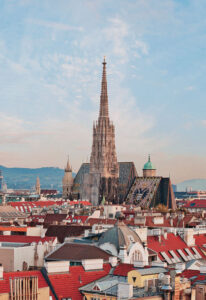 landmark coffee houses bustling, and the bars and eating joints alongside
landmark coffee houses bustling, and the bars and eating joints alongside
the Danube Canal in the centre of town abuzz with activity. Of course the local holidaymakers are out in the cooler regimes of Europe — Greece being a popular destination — as schools and colleges and many other public institutions are shut. Literary and movie festivals are on and open air readings can be enjoyed for free.
This is a historic year on many counts; the 150th year of the city’s heartbeat or showpiece — the Vienna Ringstrasse — is being celebrated with many special exhibitions and tours, as also the 60th year of its Independence in 1955. Yes, Austria is a younger Republic than ours! And between June and October, Vienna is host to its first ever interdisciplinary Biennale, bringing together the worlds of art, design and architecture.
Vienna’s Ringstrasse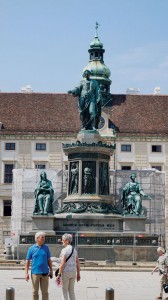
This city of 1.8 million has a true international flavour; it houses OPEC’s hea
dquarters, is one of the 4 United Nations’ headquarter cities, and also the seat of the International Atomic Energy Agency. The recent talks on lifting sanctions against Iran’s oil were held here. Of course it was the home of Mozart and he died here; two landmarks the Viennese are very proud about are the Ringstrasse, a 5 km circular boulevard lined with double rows of trees that was commissioned and declared open by the Austrian Emperor Franz Joseph in 1865. Housing many of the iconic monuments and buildings of this historic city, including the State Opera and the Museum of Fine Arts, its building, points out Director of the Vienna Tourist Board (VTB) Norbert Kettner, symbolised the “middle classes being integrated into the political, economic upper class and aristocratic social life. Its construction was unparalleled in terms of urban planning. Nowhere else in the world can one find all of a nation’s most representative public buildings standing along a single street!”
In fact when the Emperor announced its building, there was a scramble among
the nobles and rich citizens to build grand palaces in diverse architectural styles 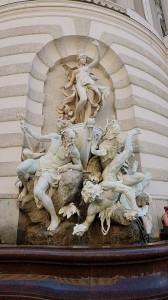
along this boulevard, which is in essence a kind of grand ring road around the inner city. As you walk around this imperial boulevard flanked by both historic
and majestic buildings, you are struck by the diversity of architectural styles the buildings display. I am no architecture expert, but am told that while the State Opera and the University are built in the Neo-Renaissance style, the Parliament and City Hall have adopted the Flemish Gothic style, with the Parliament building designed as a Greek temple and the Museum for Applied Art, Vienna Stock Exchange, and Votive Church flaunting the New Gothic style. All these edifices were constructed in the second half of the 19th century.
The private homes that were built on this landmark road “bear witness to the self-confidence of the city’s burgeoning new upper class?… the bankers, industrialists, etc,” says Isabella Rauter, Team Manager, Media Management, VTB. Many of the expats who have now retired have opted to stay on, and that is a tribute to Vienna, which once again this year, for the sixth time, was named the world’s most liveable city, among 230 surveyed, by Mercer. The criteria — political, social and economic climate, medical services, education, public transport, infrastructure, etc.
On a flying visit, regrettably there is no time to browse in the Museums of Fine 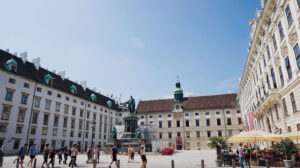 Arts and Natural History, but these should be on any art and history lover’s list, holding as they do stunning art and natural treasures.
Arts and Natural History, but these should be on any art and history lover’s list, holding as they do stunning art and natural treasures.
St Stephens Cathedral
A towering monument you can see from all over the city is the imposing St Stephens Cathedral, an iconic symbol of Vienna, as Austria itself. “Austrians love it, every child knows this symbol and, wherever they live, Austrians will come at least once to Vienna, to see it,” says Ilse, my guide.
An important Gothic edifice with four towers, its height is 107.2 metres and width 34.2 metres. From the tower room — brace yourself for 343 steps — you get a stunning view of Vienna.
During World War II, the cathedral was saved from intentional destruction by the retreating German forces, when a Captain disregarded orders to “fire a hundred shells and leave it in just debris and ashes.” On April 12, 1945, the fires lit by civilian looters in nearby shops severely damaged the roof, which collapsed. Fortunately, protective brick shells around the pulpit and tombs saved invaluable artworks. The roof was rebuilt and laid with 250,000 Bohemian glass tiles, depicting the coat of arms and other motifs.
This magnificent cathedral has stunning relics decorated with precious stones. Apart from emperors and princes, many of Vienna’s cardinals and Archbishops were laid to rest here.
Schonbrunn Palace
The summer residence of emperors, this stunningly beautiful yellow edifice, with its massive gardens and 1,441-rooms constructed in Baroque style, the Schonbrunn Palace is an important architectural, cultural and historic landmark of Austria. Always crowded with tourists, its history spans 300 years and reflects the changing taste, interests and aspirations of successive Habsburg monarchs.
To Indian visitors, of particular interest is the Millions room, with Indo-Persian miniatures from the Moghul era. These have been cut up and put together in a collage with a Baroque painted border.
Here, you get a fascinating peek into the life and psyche of Empress Elisabeth, married to Franz Joseph when she was a carefree young girl in Bavaria. Her surprising engagement to the Austrian emperor at 15 left her bitter and reflecting on how a teenager was expected to know or understand love! She also complained about her mother-in-law constantly “spying” on her! A truly 21st century woman, she later became the cult figure adored as Sisi. Finding court life oppressive, she rebelled against it; she was known for her intelligence, independent spirit, beauty and fashion. She travelled extensively and was assassinated in Geneva by an Italian anarchist in 1898.The emperor, on the contrary, worked from 5 am, with simple meals served at his table!
There’s a lot here on another Austrian icon, Maria Theresa, the only female ruler in the Habsburg dynasty, who introduced many financial and educational reforms.
City of cycles
Vienna is packed with cyclists who are seen darting across the streets. Even though Vienna is well connected by public transport — trams, underground and buses — many citizens prefer to bike their way around and have a clearly demarcated green track set aside for them. Pedestrians steer clear of these as many bikers set a scorching pace!
Gay rights at traffic lights
It’s heart-warming that while planning the annual Life Ball, the biggest European charity event for HIV/AIDS, in May, in respect for equality and LGBT rights, the Town Council changed traffic light settings at 47 pedestrian crossings in Vienna. So instead of just one-stick man poised on the red and green lights, three kinds of couples were introduced, with a blinking heart! Now pedestrians can see the red and green lights portraying a female, male or mixed couple.
Supposed to be temporary, this arrangement created such a buzz — criticism as well as overwhelming support — that these traffic lights stay on, despite protests from the Right Wing Freedom Party, as Viennese want them. “This has caught on, and cities like Munich have installed similar traffic lights,” smiles Ilse.
Cuisine
Local cuisine, Viennese wines and the refreshing Austrian beers, and above all its coffee house culture and its delectable pastries, merit a column of their own! Vienna was the heart of the Austro-Hungarian monarchy for centuries, and this union brought together countless cultures with their special culinary identities. Vienna’s geographical location has brought a distinctly Eastern European flavour to its cuisine. Hungary contributed goulash, as well as the strudel, which it had borrowed from Turkey. Bohemia, now part of the Czech Republic, contributed many of the city’s pastries (known as Mehlspeisen). And some of these I sample in the coffee houses, downed with cups of Melange, which is similar to the Italian cappuccino, but is stronger, having more coffee and less milk. South Indian coffee connoisseurs will love it!
Fortunately for vegetarians, Vienna has a refreshingly wide choice and it is not just confined to its delicious soups and a wide array of salads. The huge variety of freshly baked breads are so high on quality and taste, that coupled with some cheese, or the delicious freshly made jams for which Vienna is famous, they can be paired with a local wine to make a delicious snack.
Vienna grows enough quality grapes to not only make enough wine for local consumption but also export some to other European countries. Barely an hour’s drive away from the city centre, are located Vienna’s vineyards, and for tourists as well as locals the wine taverns offer a great menu of both European and local food and wine. For the die-hard Indians, there are many Indian restaurants in the Austrian capital.
At the Grand Hotel where I stayed there is an unduly large number of Arab visitors and Isabella answers my query saying that many of these groups prefer to stay in hotels where they can bring their own cooks and can be absolutely sure that they are adhering to their religious sensitivities. This should be possible for strictly vegetarian tourists too, provided the group is big enough.
She adds that while once the focus was on Russian tourists, (in fact, in the First District many designer label shops were opened with an eye mainly on Russian tourists and these are now languishing) with their economy going through challenging times the VTB is now looking at Asian visitors. “And we’re very happy that during the first half of 2015, we have seen a growth of 41 per cent in overnight Indian tourists and 62 per cent in day tourists. Chinese (64,991), Japanese (59,805) and South Koreans (47,517) top the charts, but the Indian arrivals (19,006) are showing strong growth; 62 per cent against China’s 17 per cent and South Korea’s 27 per cent.”
Vienna beckons Bollywood
If Switzerland was popularised to Indian tourists by Yash Chopra’s numerous Bollywood blockbusters, and Spain by Zoya Akhtar’s Zindagi na milegi dobara, why can’t Vienna follow suit, I ask Isabella. She is all smiles and says something is already on, but she can’t disclose details yet!
Last but not the least is the magic of the Danube River, about 350 km of which flows through Austria. Outside the city centre, following the path of this river you marvel at how its various meandering arms, which cause frequent flooding of Vienna were controlled and the river “straightened,” and the debris from this work used to create the enchantingly green Danube Island, which is 25 km long and a great spot for picnics, biking, open air concerts and relaxing.
Vienna will leave you awestruck at the manner in which it has seamlessly combined its imperial past with a modern vibrancy that is infectious.
